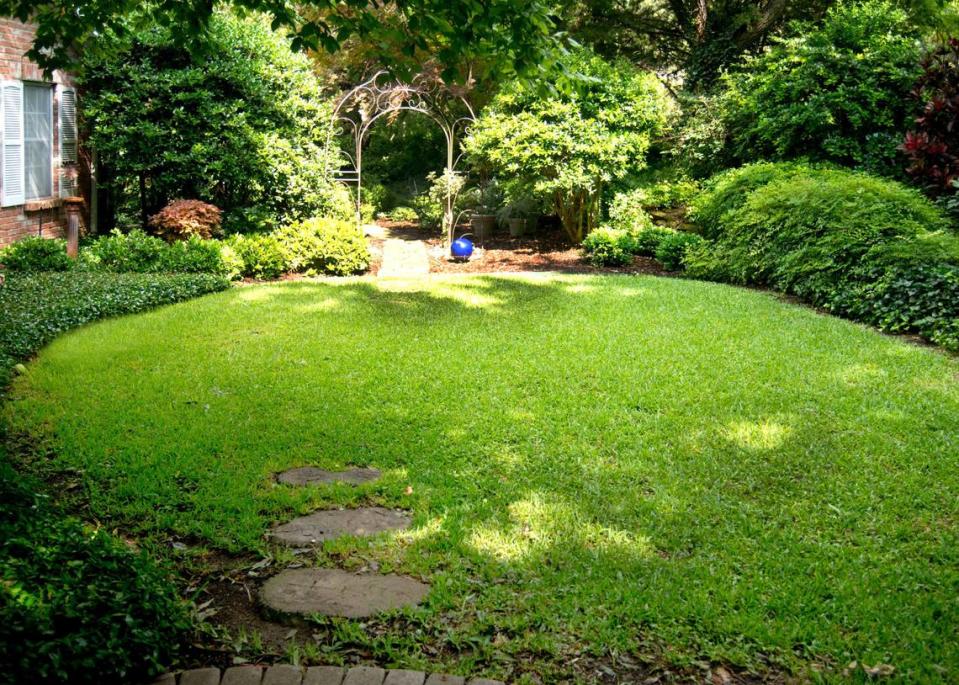Getting right to the point helps to deal with tough decisions regarding lawn care
You can dance around a point and never get your message across.
Some people come to a conversation knowing what they want to hear, and unless you’re almost blunt with your commentary, they may not get the message that you’re trying to bring.
I can imagine there are pastors out there nodding their heads, saying, “Amen to that, Brother.”
I’ve made a list of the most frustrating conversations I’ve had over the years– the ones where I’ve learned to get right to my point. As I write these, I’ll warn you that I’ll probably offend some of you, but these are my heartfelt convictions.
“I have a volunteer tree I’d like to have you identify. Can I let it grow right where it is?”
Probably not. Almost always these seedling trees are going to be some species like cottonwood, hackberry or mulberry that you really don’t want to have in your landscape. And if it was planted by a bird (from a berry), it’s probably right under a power line. Bad tree. Bad place for a tree. Bad landscape design.
“I had grass growing beneath my tree, so I know it can grow there. But I’ve planted more St. Augustine sod the past two springs and it didn’t survive. What should I be adding to make it succeed?”
Sunlight. You’ve tried the right grass for a shady location, but if it failed, it’s because there’s less sunlight there now than there was years ago when it was thriving. The tree has grown taller, wider and denser. You’re wasting your money and effort. Switch to a shade-tolerant groundcover such as mondograss (not a true grass), liriope, purple wintercreeper or English ivy. Of them all, I’ve had 40 years of good experiences with regular mondograss. Quit paddling upstream with a broken oar!
“My red oak tree’s leaves have started turning yellow each summer. It was fine for the first 8 or 10 years. I was told to add iron. Will that help?”
Yes. For a few weeks. But in the long-term you’re just putting off the inevitable. You probably were sold a true pin oak (Quercus palustris) instead of a Shumard red oak (Q. shumardii). The two species look very similar. Pin oaks must have acidic soils in order for iron to remain soluble. Let me bypass the rest of the soil chemistry lesson and just say that you need to cut your losses and replace the tree with a true Shumard red oak. If you don’t, it will cost you more and more money each year to address the iron deficiency problems. Hundreds of dollars. You could buy a good tree for what you’ll be wasting.
“My new shrubs and trees from this spring drowned from all the rain.”
I’ll admit that I’m being pre-emptive on this one. I’ve been doing this Q&A thing for 50 years here in the Metroplex. I hear this comment every year, and it’s extremely rare that it’s actually true. Almost 100 percent of the time people have actually let plants get too dry one or more times. That’s going to be easy to do this year. That’s because (1) so many frozen plants were replaced with hollies (great choices!), and hollies don’t really wilt to warn us when they’re too dry. It’s also going to be true because (2) people have forgotten that their plants have to be watered. We’ve gotten out of the habit while it’s rained day after day. New plants must be watered by hand – with a hose, water wand and water breaker. They must be soaked for 30 seconds every couple of days during the heat.
“My redtip photinias can’t be that sick. All they have is a few spots on their leaves.”
Trust me on this one. That’s the first stage of the fatal Entomosporium fungal leaf spot. Next, you’ll see leaves turning pale green, then white. Then they’ll turn brown and start to fall off. Within a year branches will be bare and within two years the entire plant will be gone. Sadly, we have no preventive measure and no cure for this disease. It has rendered redtips almost useless all across the South and up the West and East Coasts as well.
Don’t replant with more of them, and don’t bother trying to spray to cure it. Nellie R. Stevens hollies are the best replacements if you need a screen that’s 10 to 15 feet tall. Willowleaf (Needlepoint) hollies are best in then 8- to 10-foot range.
“I left my Indian hawthorns and Chinese tallow and loquat trees after the cold. Now they have new growth. I’m just going to retrain them.”
That’s a matter of personal choice, so I don’t get a vote. But would I recommend trying to save any of these? No. First of all, it will take them years to regain the good looks they had before the February cold bullied its way through. It’s not worth the wait. New plants aren’t that expensive. Second, Indian hawthorns have serious disease problems with Entomosporium (same as their cousins, the redtip photinias I mentioned earlier), so even if they do regrow, you’re still going to have Indian hawthorns. And loquats and Chinese tallows aren’t winter-hardy this far north. They should never have been planted in North Texas. This is your chance to change to something much better suited.
You can hear Neil Sperry on KLIF 570AM on Saturday afternoons 1-3 pm and on WBAP 820AM Sunday mornings 8-10 am. Join him at www.neilsperry.com and follow him on Facebook.



